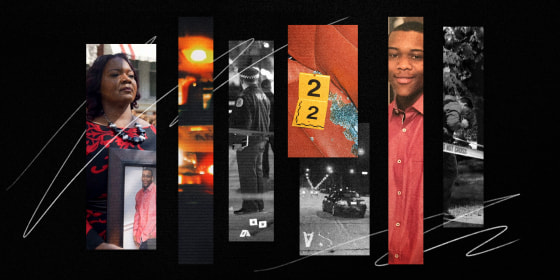The number of homicides being solved in the U.S. has fallen in recent years, but by how much depends on where you live – and your race.
A solved murder can be a proxy for who gets justice in this country, and tracking changes in solved-murder rates in itself requires detective work. That’s because no federal law enforcement agency is assigned to monitor failed homicide investigations by local police departments, which often file incomplete homicide reports, or sometimes no reports at all.
The Murder Accountability Project, a volunteer-run, nonprofit organization, has gathered data from the FBI and police departments around the country, and the numbers illustrate the disparate outcomes of unsolved murders. According to an analysis of the data by NBC News, while fewer homicides are being solved nationally, the figures vary significantly based on location and on the victim’s race.

If you live in Washington, D.C., barely 1 of 3 homicides have been solved. If you live in Charleston County, South Carolina, close to 9 out of 10 have been solved. And more often than not, the solved rates diverge based on the race of the victim.
Nationally, the solved-murder rate has fallen from 79 percent in 1976 to 69 percent in 2019. While the solved rate for white victims has increased to 81 percent in 2019, it has fallen to 59 percent for Black victims.
Thomas Hargrove, the founder and chairman of the Murder Accountability Project, said he doesn’t think prejudice drives the police to prioritize white victims.
“I would not believe that. I really wouldn’t,” Hargrove said. “I don’t think it’s a general racism among detectives, but I do think that there are factors that take solvability out of their hands.”
Those factors include funds for detective work and the increased likelihood that a Black victim was killed by a stranger, which are more difficult cases for homicide detectives to solve, Hargrove said.
Across the country, North Dakota has the highest solved-murder rate among U.S. states for homicides reported from 1976 to 2019. It also has the fewest reported murders, according to the Murder Accountability Project. Its 94 percent solved rate dwarfs New York state’s 55 percent solved rate.
The median number of homicides reported from 1976 to 2019 among the more than 3,000 places tracked in the Murder Accountability Project’s data was 35, and 128 of those places counted more than 1,000 murders in that time period. Three of 4 of those counties had higher solve rates for white victims than for Black victims.

